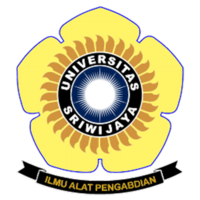Akuaponik Sebagai Salah Satu Pendekatan Pemanfaatan Lahan Marginal untuk Penambahan Pendapatan Keluarga
Abstract
Prayitno, S.B. (2024). Aquaponics as an approach in utilizing marginal land to increase family income. In: Herlinda S et al. (Eds.), Prosiding Seminar Nasional Lahan Suboptimal ke-12 Tahun 2024, Palembang 21 Oktober 2024. (pp. 20–26). Palembang: Penerbit & Percetakan Universitas Sriwijaya (UNSRI).
Marginal land is a type of land that has low soil fertility, less ideal for agricultural activities and other productive uses. Aquaponics is a combination of aquaculture and hydroponics, where aquaculture waste is used as nutrients for plants. Aquaponics does not require fertile land, is efficient in water use, uses land more effectively, provides educational and innovation opportunities and could increase family income. Aquaponics has several systems, including the Deep Water Culture (DWC), Ebb and Flow, and Nutrient Film Technique (NFT). Each of the above systems is highly dependent on the type of plants and fish to be cultured. The available land, the scale of production, and the initial and maintenance costs. The application of aquaponics with 16-20 netpots/M2, and fish culture media, could produce at least 5 bunches of kangkong/mustard greens/pakchoy every two weeks, and a minimum of 500 juvenile fish/month/M2 with income from plants of around Rp. 15,000, - and fish seeds of around Rp. 100,000, -. The remaining mud waste every month around 300 grams wet can be used as fertilizer for surrounding plants. It can be concluded that aquaponics is one of the effective marginal land utilization systems, environmentally friendly and can increase family income.
Keywords
Full Text:
PDFArticle Metrics
Abstract view : 160 timesPDF - 621 times
Refbacks
- There are currently no refbacks.

